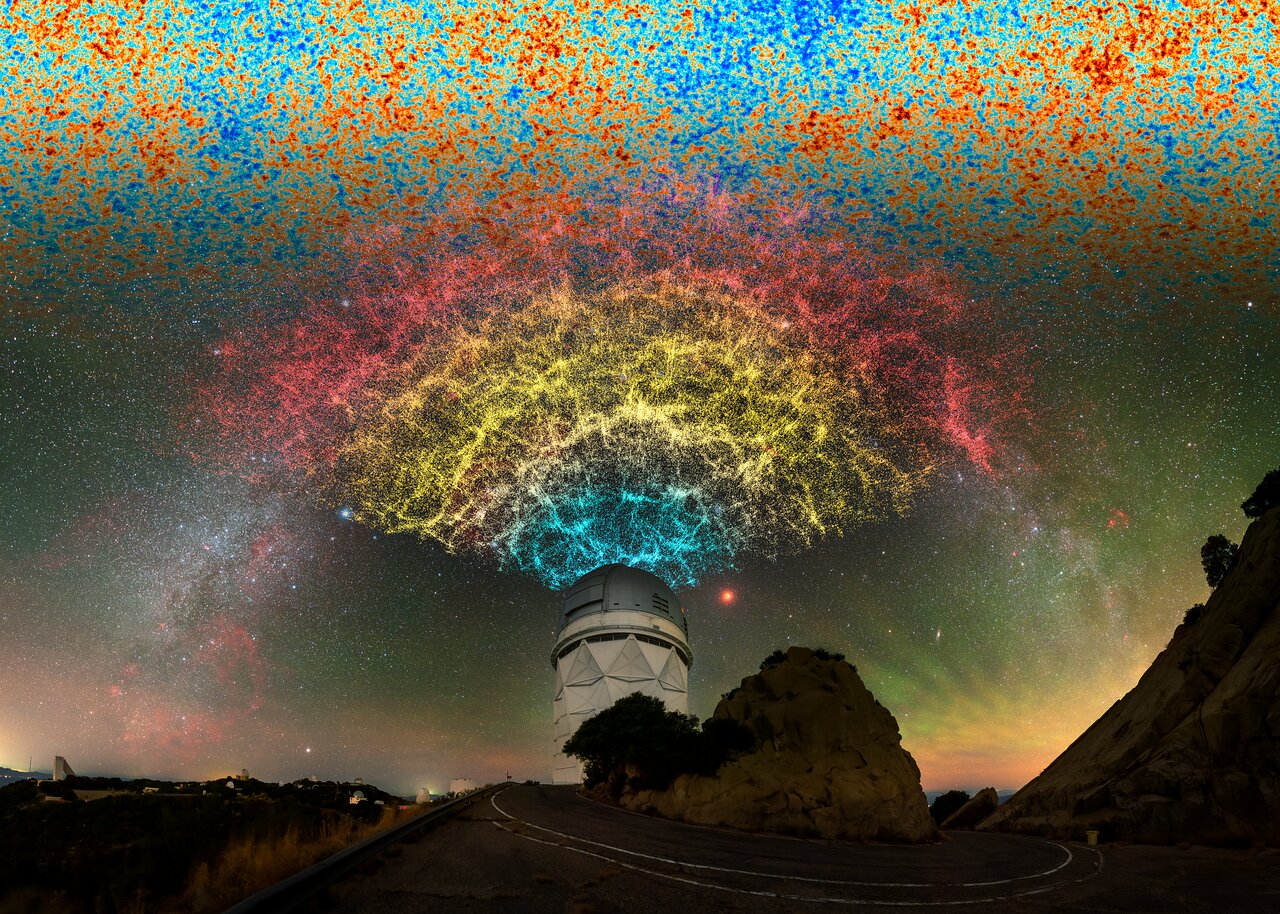New data on dark energy obtained using the NSF Mayall telescope allowed scientists to dive into 11 billion years ago and reveal the location of tens of thousands of galaxies on the largest 3D map of the universe in its history. The results of the dark energy study, known as DESI, have shown how the universe has been expanding all this time.

The results presented on the 3D map include 600 thousand galaxies. It seems like a lot, but this is only 0.1% of the total volume of the study. The map is designed to show how galaxies are moving away from us with the expansion of the universe: the farthest galaxies are marked in red, and the nearest ones are blue. There is also an expanded version of the map that lets us see thousands of individual points of light, each representing a galaxy.
“These first-year data are only the beginning of DESI’s quest to unravel the expansion history of the Universe and they hint at the extraordinary science to come,” said Pat McCarthy, director of NOIRLab.
Studying the location of galaxies helps to understand how the universe expanded in the presence of dark energy. It is known that the expansion of the universe accelerates over time, and dark energy is the main cause of this phenomenon.
The results of the first year of DESI’s research are particularly interesting because they indicate possible changes in dark energy over time. Although the data is new enough to establish precise conclusions, it seems that dark energy can evolve, changing in its strength over billions of years.
“We’re incredibly proud of the data, which have produced world-leading cosmology results. So far we’re seeing basic agreement with our best model of the Universe, but we’re also seeing some potentially interesting differences that could indicate dark energy is evolving with time,” added DESI director and LBNL scientist Michael Levi.
Earlier, we reported how the first results on the hunt for dark matter turned out to be disappointing.
According to noirlab.edu
Follow us on Twitter to get the most interesting space news in time
https://twitter.com/ust_magazine


